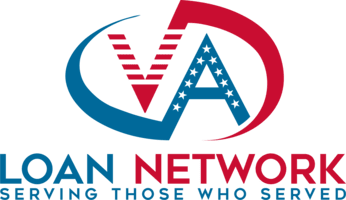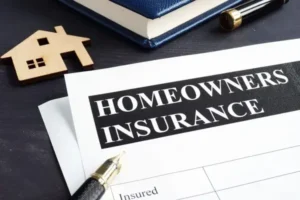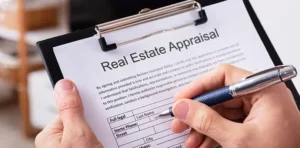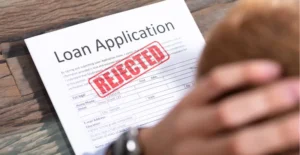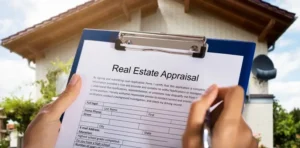Veterans buying a home with a VA loan face unique insurance considerations. While you won’t pay private mortgage insurance (PMI), you do need a robust homeowner’s insurance policy that meets the VA’s specific requirements.
This coverage not only safeguards your property against damage from fire, theft, and other perils but also protects your lender’s interest in the home.
In this guide, you’ll learn how homeowner’s insurance for VA loans works, what coverage types are available, and how to determine the right deductible and coverage levels. By understanding your options, you can protect your largest investment and find cost-effective solutions.
In this Article
Why Homeowner’s Insurance Matters on a VA Loan
When purchasing a home with a VA loan, homeowner’s insurance is non-negotiable—it’s required by the U.S. Department of Veterans Affairs (VA) and your lender. Unlike private mortgage insurance (PMI), which is often required for conventional loans, homeowner’s insurance protects both your investment and the lender’s collateral from risks like fire, theft, or storm damage. As a veteran, this home may be one of your largest assets, so ensuring you’re adequately protected is crucial.
Key Terms to Know
- VA Loan Insurance Requirements: Specific guidelines set by the VA and lenders to safeguard the property.
- Replacement Cost vs. Actual Cash Value: Different methods insurers use to calculate the value of your home or belongings.
- Escrow: An account your lender sets up to pay insurance and taxes on your behalf.
VA Loan vs. Conventional Loan Insurance Requirements
Homeowner’s insurance is required for both VA and conventional loans, but VA loans have unique aspects to consider. Below is a quick comparison:
| Feature | VA Loan | Conventional Loan |
|---|---|---|
| Homeowner’s Insurance Required? | Yes | Yes |
| Private Mortgage Insurance (PMI) | Not required | Required if down payment < 20% |
| Minimum Coverage | Replacement cost of the home | Often loan amount or replacement cost |
| Escrow Account | Typically required | Often required |
| Deductible Limits | Lender discretion (commonly $500–$2,500) | Lender discretion |
The VA requires coverage up to the home’s replacement cost, not just the loan amount. Should a disaster destroy your property, you need enough coverage to rebuild—otherwise, you might face significant out-of-pocket expenses.
Types of Homeowner’s Insurance Coverage
Most standard homeowner’s policies are divided into six main coverage categories:
- Dwelling Coverage: Protects the physical structure of your home (walls, roof, foundation). Example: A fallen tree damages your roof.
- Other Structures Coverage: Covers detached structures like garages, sheds, and fences. Example: A storm damages your backyard fence.
- Personal Property Coverage: Covers your belongings (furniture, electronics, clothing). Example: Electronics stolen during a break-in.
- Liability Coverage: Pays legal costs/damages if someone is injured on your property and you’re responsible. Example: A guest slips on icy steps.
- Medical Payments Coverage: Covers minor medical bills for guests, regardless of fault. Example: A child is injured in your yard.
- Loss of Use (Additional Living Expenses): Pays for temporary housing if your home is uninhabitable. Example: Fire damage forces you to stay in a hotel.
Tip: Check if your policy uses replacement cost value (RCV) or actual cash value (ACV)—replacement cost usually offers better protection but at a higher premium.
How to Determine the Right Coverage Amounts
Here’s how to gauge your coverage needs:
- Dwelling Coverage: Aim for 100% of the estimated cost to rebuild. Get an accurate estimate from your insurance agent or a contractor.
- Personal Property Coverage: Typically 50–70% of dwelling coverage. Perform a home inventory to document valuables.
- Liability Coverage: Start at $100,000; many experts suggest $300,000+. Align with your net worth.
- Medical Payments Coverage: Ranges from $1,000 to $5,000 per incident. Good for covering small injuries on your property.
- Loss of Use: Usually around 20% of dwelling coverage. Ensure it can cover hotel stays and related costs.
Choosing the Right Deductible
Your deductible is what you pay out of pocket before insurance kicks in. The trade-off:
- Lower Deductible ($500–$1,000): Higher premium, less financial strain when filing a claim.
- Higher Deductible ($2,000+): Lower premium, but more out-of-pocket if disaster strikes.
Example Calculation: If the premium is $300 cheaper annually for a $2,000 deductible vs. a $500 deductible, in five years you save $1,500—enough to offset the higher claim cost.
Flood, Earthquake, and Windstorm Insurance Considerations
Standard homeowner’s insurance usually excludes these perils:
- Flood Insurance: Required in FEMA-designated flood zones. Costs average $700–$1,200/year. Check FEMA Flood Maps for risk.
- Earthquake Insurance: Advised in seismic areas. Premiums can be high, but it’s a lifesaver if quakes are common.
- Windstorm Insurance: May be mandatory in hurricane-prone regions. Often separate or added via a rider.
| Insurance Type | Required? | Average Annual Cost | Best For |
|---|---|---|---|
| Flood Insurance | Yes, if in flood zone | $700–$1,200 | Homes near coasts or rivers |
| Earthquake Insurance | Optional but recommended | $800–$2,500 | Seismic regions (e.g., CA) |
| Windstorm Insurance | Sometimes (region-dependent) | $500–$1,500 | Hurricane-prone states |
VA Loan Requirements for Homeowner’s Insurance
The VA’s minimum property requirements ensure the lender’s investment is protected:
- Coverage Level: Must meet or exceed the replacement cost of the home.
- Lender as Additional Insured: The policy must list your lender or servicer as an additional insured/loss payee.
- Escrow Account: Most VA lenders require an escrow account to manage premiums and property taxes.
- Deductible Limits: No strict VA maximum, but lenders often prefer a range of $500–$2,500.
Official Resource: Visit the VA’s official Home Loans website for in-depth guidelines.
How to Find the Best and Most Affordable VA Loan Insurance
Getting quality coverage at a fair price is crucial. Follow these steps:
- Compare Multiple Quotes: Get at least three quotes. Use online tools or an independent agent.
- Negotiate and Bundle: Bundle home and auto for discounts. Don’t hesitate to negotiate based on competing quotes.
- Check Financial Ratings: Confirm insurer stability with agencies like AM Best and Moody’s.
- Seek Veteran-Specific Discounts: Some insurers partner with veteran organizations for exclusive rates.
- Improve Home Safety: Security systems, fire alarms, and storm shutters may lower premiums.
Discounts and Savings Opportunities for Veterans
- Military Affiliation Discounts: USAA is notable if you’re eligible, but other insurers also offer military rates.
- Veteran Organization Partnerships: Groups like the American Legion or VFW sometimes have special plans.
- Bundling: Combining multiple policies (home, auto) often yields substantial savings.
- Loyalty Programs: Long-term customers can see rates drop over time; veterans often qualify immediately.
- Home Security: Many insurers reward upgraded safety features with lower premiums.
Common Misconceptions about VA Loan Insurance
Myth: VA loans require private mortgage insurance (PMI).
Fact: VA loans do not require PMI, even with no down payment. This unique benefit helps veterans save hundreds per month compared to conventional loans with less than 20% down.
Myth: VA loan insurance protects the veteran.
Fact: The VA funding fee (often mistaken for insurance) protects the lender, not the borrower. It reduces risk for lenders, but veterans remain responsible for repaying the full loan.
Myth: The VA funding fee is the same for everyone.
Fact: The funding fee varies based on down payment, service type, and usage history. First-time users with a down payment pay less than repeat users with no down payment.
Myth: All veterans must pay the VA funding fee.
Fact: Veterans receiving VA disability compensation and surviving spouses receiving DIC are exempt from the funding fee. Always verify exemption status on your Certificate of Eligibility (COE).
Myth: Homeowner’s insurance is optional with a VA loan.
Fact: Homeowner’s insurance is required on all VA loans. Lenders mandate coverage to protect the property—the loan’s collateral—from damage, loss, or liability.
Myth: The funding fee can only be paid upfront.
Fact: The VA funding fee can be paid upfront or rolled into the loan amount, allowing borrowers to finance the cost over time rather than paying out-of-pocket at closing.
Myth: VA loan insurance covers property damage.
Fact: VA loans do not include property insurance. Veterans must obtain standard homeowner’s insurance separately to protect against fire, theft, natural disasters, and other damages.
Myth: VA loans require flood insurance in all areas.
Fact: Flood insurance is only required if the property is in a FEMA-designated high-risk flood zone. It’s not automatically included or required.
Myth: You can’t choose your own insurance provider with a VA loan.
Fact: Veterans are free to shop around and choose any reputable insurer, as long as the policy meets the lender’s and VA’s minimum coverage requirements.
Myth: The VA handles all insurance issues directly.
Fact: The VA does not manage homeowner’s insurance. Borrowers must work with private insurers and stay current on premiums to remain in compliance with loan terms.
Filing a Claim and the Claims Process
Knowing the claims process helps during stressful times:
- Document Damage Immediately: Take photos/video, save receipts.
- Contact Your Insurer: Provide policy and claim details right away.
- Adjuster Visit: An insurance adjuster inspects the damage. Keep all documentation.
- Receive Payment: Insurer issues a claim check. The lender may need to co-sign if the damage is structural.
- Notify the VA (If Necessary): Significant damage might require informing your VA loan servicer.
FAQs about VA Loan Homeowner’s Insurance
- Is homeowner’s insurance mandatory for a VA loan?
Yes, proof of coverage is required before closing, and it must meet the VA’s minimum replacement cost standards. - How much homeowner’s insurance do I need for a VA loan?
Enough to rebuild your home if it’s destroyed, which usually exceeds your mortgage balance. - Can I choose any insurance provider?
Yes, but confirm the policy meets VA requirements (replacement cost coverage, deductible limits, etc.). - Do I need flood insurance with a VA loan?
Only if your property is in a designated flood zone, though optional if you’re in a moderate-risk area. - Can I waive escrow?
Most lenders require escrow for VA loans, but some may waive it with an excellent credit profile. - What if I let my policy lapse?
The lender can force-place insurance at a higher cost, increasing your monthly payment. - Does homeowner’s insurance cover routine wear and tear?
No, it covers damage from covered perils like fire or wind, not maintenance or aging. - Can I switch providers after closing?
Yes, but inform your lender to ensure continuous coverage and compliance with VA loan standards. - How do I file a claim?
Contact your insurer immediately, document damage, and coordinate any necessary inspections. - Are there discounts for veterans?
Many insurers offer military or veteran-specific discounts—always ask for them.
Checklist: How to Stay on Top of Your Homeowner’s Insurance
- Review Annually: Update coverage based on renovations or valuable purchases.
- Keep a Home Inventory: Photos, videos, and receipts for personal property.
- Communicate with Lender: If you change insurers, notify your loan servicer.
- Seek New Discounts: Ask if you qualify for any additional military or safety discounts each year.
- Maintain Coverage: Avoid lapses to prevent force-placed insurance and higher costs.
Final Thoughts and Next Steps
Homeowner’s insurance for VA loans may seem complex, but it’s all about balancing peace of mind with affordability.
By comparing quotes, investigating potential discounts, and customizing coverage for your home’s unique risks—such as flood or earthquake insurance—you’ll be prepared for whatever life throws your way.
Remember, keeping your policy up to date is just as important as initially securing the right coverage. Review limits, document valuable belongings, and maintain open communication with your lender.
With proper planning and professional guidance, you can ensure your VA-financed home is well-protected, letting you focus on what matters most in life.
Ready to take the next step towards homeownership? Speak to our VA lenders and compare loan offers today

